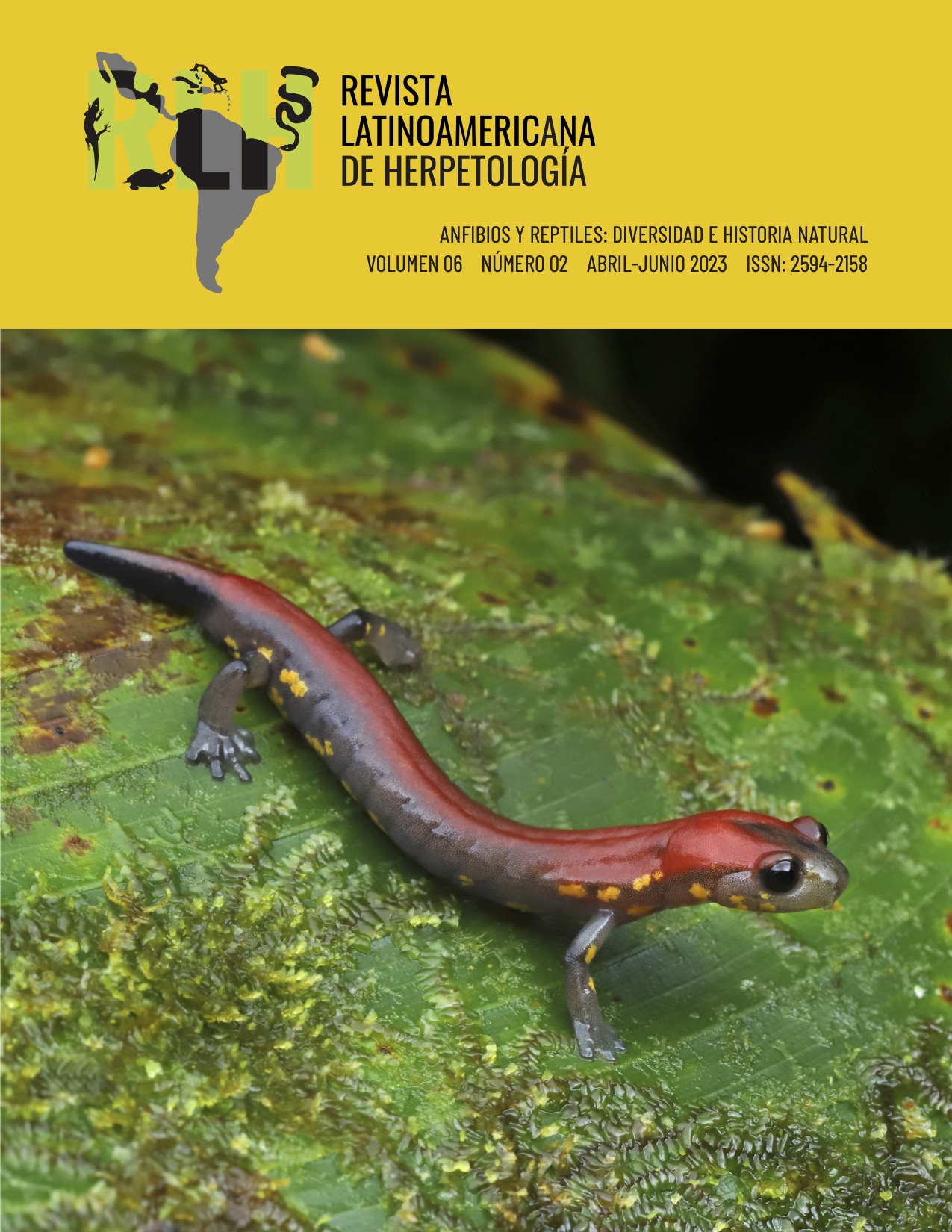ABUNDANCE OF THE MARSUPIAL FROG Gastrotheca riobambae (FOWLER, 1913) (HEMIPHRACTIDAE, ANURA) IN AN URBANIZATION GRADIENT IN THE PROVINCE OF PICHINCHA, ECUADOR
DOI:
https://doi.org/10.22201/fc.25942158e.2023.2.520Keywords:
amphibians, breeding habitat, landscape composition, tadpolesAbstract
Marsupial frogs have experienced dramatic population declines in Ecuador, mainly due to the transformation and loss of natural habitats, among other causes. This study seeks to understand how the abundance of Gastrotheca riobambae varies in an urbanization gradient, including conserved, rural, peri-urban, and urban areas in the province of Pichincha, Ecuador. Each area was demarcated by a 100 hectares quadrant, for which seventeen variables of landscape composition and breeding habitat were characterized, three 500 x 3 m transects were sampled to record adult frogs, and sweeps with aquarium nets were made to record the abundance of tadpoles in water bodies. A principal component analysis (PCA) was performed to assess the correlation between landscape composition variables and breeding habitat, then a Generalized Additive Model (GAM) was fitted to relate abundance to uncorrelated variables. Ninety-four adult frogs and 312 tadpoles were recorded in the urbanization gradient, which significantly influenced the variation in the abundance of G. riobambae (X2(2) = 20.63, p < 0.001; X2(2) = 66.98, p < 0.001). However, contrary to what was expected, there was no linear relationship in the urbanization gradient since the rural and peri-urban areas presented greater abundance than the conserved area. The number of water bodies, grassland areas, and vegetation cover were related to the areas of greatest abundance along the gradient, as were canopy cover, surface temperature, and water body volume, which describe the breeding habitat. It is concluded that G. riobambae occupies environments transformed by human activities in rural and peri-urban areas, but these habitats require specific suitable characteristics for their development and survival.
Downloads
Published
How to Cite
Issue
Section
License
Copyright (c) 2023 Revista Latinoamericana de Herpetología

This work is licensed under a Creative Commons Attribution-NonCommercial-ShareAlike 4.0 International License.







